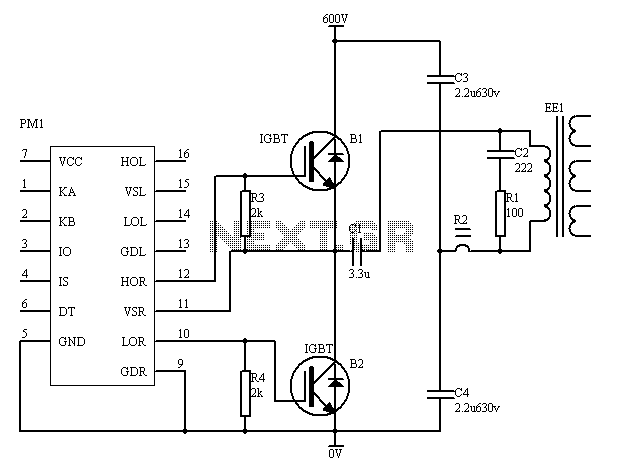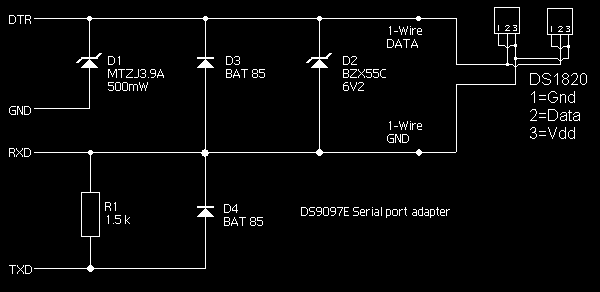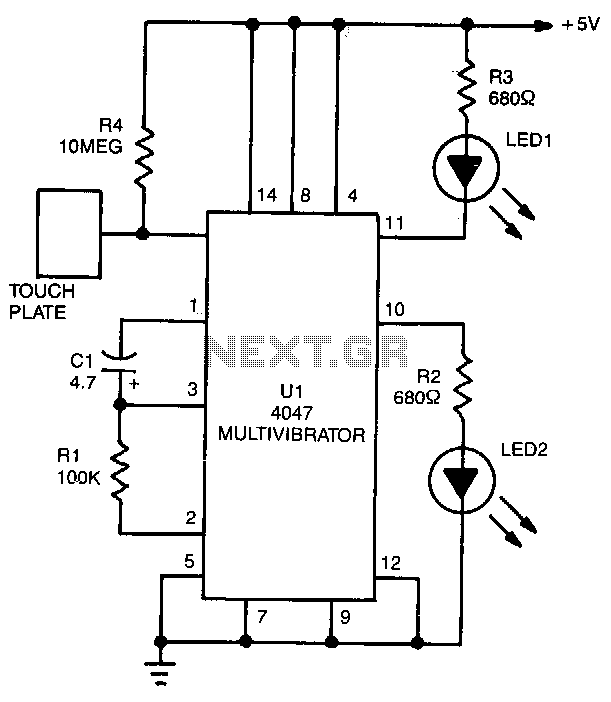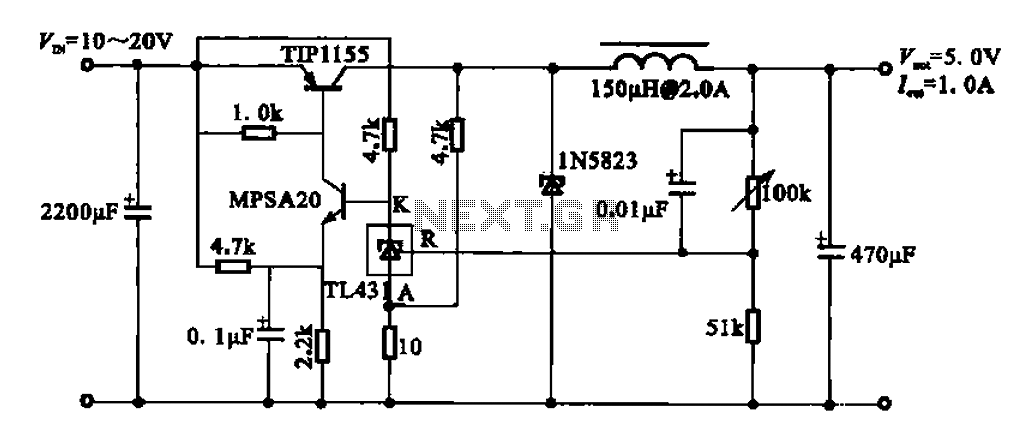
It can produce 10mV- compensation voltage temperature compensation voltage generating circuit
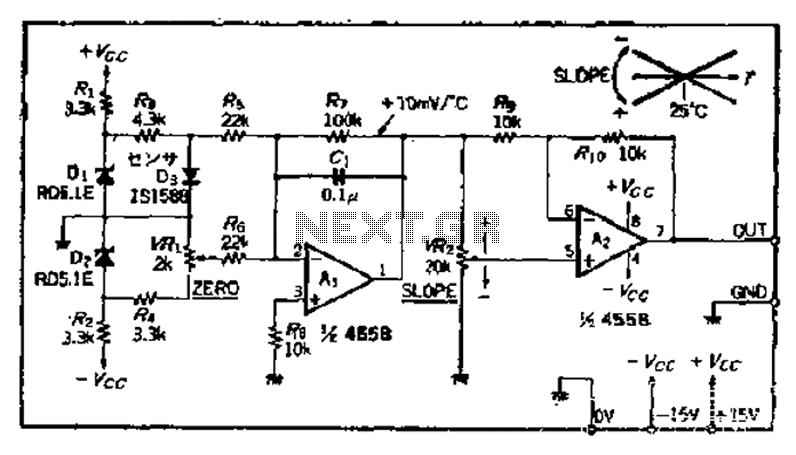
A temperature sensor can be created using a standard silicon diode, which produces approximately 2.2 mV per degree Celsius variation. An operational amplifier (OP amplifier) is utilized with a positive reference temperature (room temperature). The output signal is amplified about five times to achieve a +10 mV per degree Celsius output. Additionally, the circuit includes a variable resistor to adjust the gain and polarity, allowing the output voltage to range from +10 mV to -10 mV, reflecting both positive and negative temperature coefficients.
The described temperature sensor circuit employs a silicon diode as the sensing element, leveraging its forward voltage drop characteristics that vary with temperature. When the diode is forward-biased, it generates a small voltage that correlates with temperature changes. The output from the diode is fed into an operational amplifier configured in a non-inverting configuration to amplify the small signal generated by the diode.
The operational amplifier is set with a gain of five, achieved through a feedback resistor network. This amplification is essential to make the small voltage variations detectable and usable for further processing. The output of the operational amplifier provides a linear representation of temperature changes, producing a signal of +10 mV per degree Celsius.
To allow for versatility in the application, a variable resistor is integrated into the circuit. This resistor enables adjustments to the gain and polarity of the output signal. By altering the resistance, the user can modify the amplification factor, thereby tailoring the sensor's response to specific requirements. Furthermore, the circuit is designed to accommodate both positive and negative temperature coefficients, enabling it to output voltages ranging from +10 mV to -10 mV. This feature is particularly useful for applications where temperature may fluctuate above and below a reference point, such as in environmental monitoring systems or HVAC controls.
The overall design is compact and efficient, making it suitable for various electronic applications where precise temperature measurement and control are essential. The simplicity of the silicon diode as a sensor combined with the flexibility offered by the operational amplifier and variable resistor makes this circuit a practical solution for temperature sensing needs.A temperature sensor such as the use of ordinary silicon diode, about one obtained 2.2mV ,/variation of Oc. OP amplifier AL with the positive reference temperature (room ju) un der. Sound extravagant drop to zero, only the changed portion magnified about 5 times to obtain a + 10mV/port C output - OP amplifier Az is a random variable resistor for changing the gain and polarity. The - circuit, can be generated from the positive to the negative temperature coefficient of any voltage (+ 10mV ~ -lOmV) O
The described temperature sensor circuit employs a silicon diode as the sensing element, leveraging its forward voltage drop characteristics that vary with temperature. When the diode is forward-biased, it generates a small voltage that correlates with temperature changes. The output from the diode is fed into an operational amplifier configured in a non-inverting configuration to amplify the small signal generated by the diode.
The operational amplifier is set with a gain of five, achieved through a feedback resistor network. This amplification is essential to make the small voltage variations detectable and usable for further processing. The output of the operational amplifier provides a linear representation of temperature changes, producing a signal of +10 mV per degree Celsius.
To allow for versatility in the application, a variable resistor is integrated into the circuit. This resistor enables adjustments to the gain and polarity of the output signal. By altering the resistance, the user can modify the amplification factor, thereby tailoring the sensor's response to specific requirements. Furthermore, the circuit is designed to accommodate both positive and negative temperature coefficients, enabling it to output voltages ranging from +10 mV to -10 mV. This feature is particularly useful for applications where temperature may fluctuate above and below a reference point, such as in environmental monitoring systems or HVAC controls.
The overall design is compact and efficient, making it suitable for various electronic applications where precise temperature measurement and control are essential. The simplicity of the silicon diode as a sensor combined with the flexibility offered by the operational amplifier and variable resistor makes this circuit a practical solution for temperature sensing needs.A temperature sensor such as the use of ordinary silicon diode, about one obtained 2.2mV ,/variation of Oc. OP amplifier AL with the positive reference temperature (room ju) un der. Sound extravagant drop to zero, only the changed portion magnified about 5 times to obtain a + 10mV/port C output - OP amplifier Az is a random variable resistor for changing the gain and polarity. The - circuit, can be generated from the positive to the negative temperature coefficient of any voltage (+ 10mV ~ -lOmV) O


